
Filter News
Area of Research
- (-) Energy Science (120)
- (-) Nuclear Science and Technology (39)
- Advanced Manufacturing (7)
- Biology and Environment (105)
- Biology and Soft Matter (1)
- Computational Biology (1)
- Computational Engineering (2)
- Computer Science (10)
- Electricity and Smart Grid (3)
- Energy Frontier Research Centers (1)
- Fuel Cycle Science and Technology (1)
- Functional Materials for Energy (1)
- Fusion and Fission (32)
- Fusion Energy (10)
- Isotope Development and Production (1)
- Isotopes (7)
- Materials (100)
- Materials for Computing (14)
- Mathematics (1)
- National Security (46)
- Neutron Science (126)
- Nuclear Systems Modeling, Simulation and Validation (1)
- Quantum information Science (3)
- Sensors and Controls (1)
- Supercomputing (79)
News Topics
- (-) Big Data (5)
- (-) Cybersecurity (9)
- (-) Environment (54)
- (-) Grid (39)
- (-) Machine Learning (7)
- (-) Nanotechnology (8)
- (-) Neutron Science (15)
- (-) Nuclear Energy (41)
- (-) Space Exploration (7)
- 3-D Printing/Advanced Manufacturing (82)
- Advanced Reactors (15)
- Artificial Intelligence (8)
- Bioenergy (26)
- Biology (11)
- Biomedical (8)
- Biotechnology (4)
- Buildings (38)
- Chemical Sciences (14)
- Clean Water (8)
- Composites (17)
- Computer Science (27)
- Coronavirus (13)
- Critical Materials (9)
- Energy Storage (71)
- Exascale Computing (2)
- Fossil Energy (2)
- Frontier (2)
- Fusion (9)
- High-Performance Computing (6)
- Hydropower (3)
- Isotopes (6)
- Materials (35)
- Materials Science (29)
- Mathematics (2)
- Mercury (3)
- Microelectronics (1)
- Microscopy (8)
- Molten Salt (5)
- National Security (5)
- Partnerships (12)
- Physics (3)
- Polymers (11)
- Quantum Science (2)
- Security (6)
- Simulation (4)
- Statistics (1)
- Summit (4)
- Transportation (66)
Media Contacts
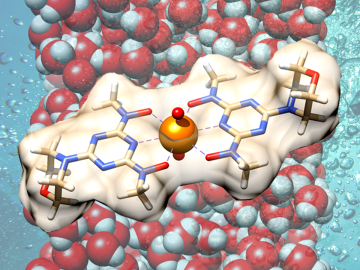
Scientists have demonstrated a new bio-inspired material for an eco-friendly and cost-effective approach to recovering uranium from seawater.

Scientists at Oak Ridge National Laboratory have developed a low-cost, printed, flexible sensor that can wrap around power cables to precisely monitor electrical loads from household appliances to support grid operations.
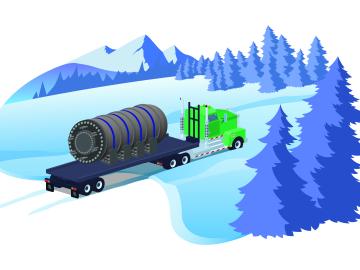
Oak Ridge National Laboratory scientists are evaluating paths for licensing remotely operated microreactors, which could provide clean energy sources to hard-to-reach communities, such as isolated areas in Alaska.
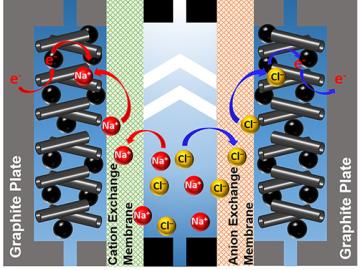
A team of scientists led by Oak Ridge National Laboratory used carbon nanotubes to improve a desalination process that attracts and removes ionic compounds such as salt from water using charged electrodes.
Higher carbon dioxide levels caused 30 percent more wood growth in young forest stands across the temperate United States over a decade, according to an analysis led by Oak Ridge National Laboratory.
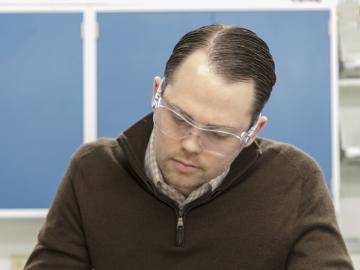
Oak Ridge National Laboratory is using ultrasonic additive manufacturing to embed highly accurate fiber optic sensors in heat- and radiation-resistant materials, allowing for real-time monitoring that could lead to greater insights and safer reactors.
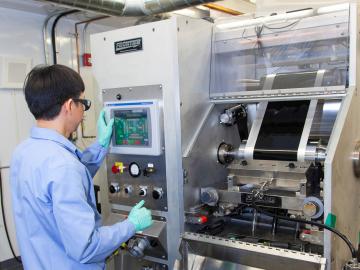
The use of lithium-ion batteries has surged in recent years, starting with electronics and expanding into many applications, including the growing electric and hybrid vehicle industry. But the technologies to optimize recycling of these batteries have not kept pace.
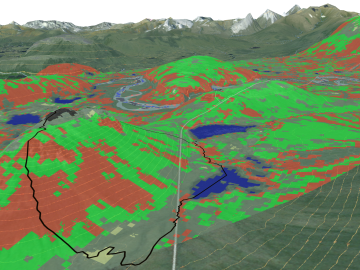
A team of scientists led by Oak Ridge National Laboratory used machine learning methods to generate a high-resolution map of vegetation growing in the remote reaches of the Alaskan tundra.
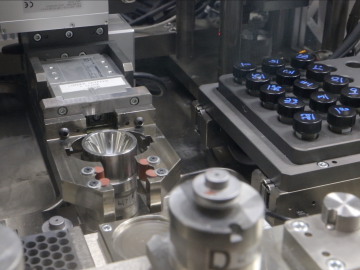
By automating the production of neptunium oxide-aluminum pellets, Oak Ridge National Laboratory scientists have eliminated a key bottleneck when producing plutonium-238 used by NASA to fuel deep space exploration.

The Department of Energy’s Oak Ridge National Laboratory is collaborating with industry on six new projects focused on advancing commercial nuclear energy technologies that offer potential improvements to current nuclear reactors and move new reactor designs closer to deployment.


